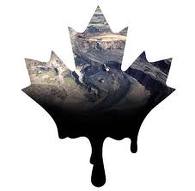The proposed 1,980 mile long pipeline by the Calgary-based TransCanada Keystone XL pipeline has been indefinitely delayed.
The decision by the U.S. government is being celebrated by Indigenous rights and environmental activists on both sides of the border.
The massive pipeline network — about five times the length of the trans-Alaska oil pipeline — was designed to move 1.5 million barrels of Canadian oil daily to U.S. refineries. Much of this crude oil would be from Alberta’s tar sands.
TransCanada Corporation won approval two years ago for the first Keystone pipeline, which carries crude oil across Saskatchewan and Manitoba and through North Dakota, South Dakota, Nebraska, Kansas, Missouri and Illinois.
The 36-inch Keystone pipeline was completed in June 2010, and the TransCanada Corp. was preparing construction and the required permits for the TransCanada’s Keystone XL pipeline; this pipeline — at a cost of $7 billion — was designed to carry crude oil from tar sands near Hardisty, Alberta, to the Gulf Coast via Montana, South Dakota, Nebraska, Kansas, Oklahoma and Texas.
But final U.S. governmental approval for the competition of the pipeline has been delayed indefinitely with little in the way of official governmental explanation. Many speculate, though, that the government’s decision was influenced both by environmental concerns and a public backlash since the infamous BP oil spill.
“I think it’s fair to speculate that BP fouled the nest for TransCanada,” said Richard Fineberg, a pipeline analyst with Ester, Alaska-based Research Associates. “There is much more attention to the industry and its dark side. It’s going to be harder to get things done at this moment.”
According to an Indigenous Environmental Network(IEN) press release, this proposed pipeline was expected to run a 36-inch pipeline from Hardisty, Alberta, to Houston, Texas, carrying 900,000 barrels of bitumen from the Alberta Tar Sands. Recent oil industry events like the BP Gulf Coast, and the Enbridge’s pipeline spill in Michigan have made several U.S. congressional leaders speak out against this pipeline.
IEN has been working with tribal councils on both sides of the U.S./Canada border as it pertains to the tar sands development. In the U.S., several tribal councils along the route have passed resolutions against this proposed pipeline. First Nations in Canada are also passing resolutions against Enbridge Energy’s Northern Gateway pipeline, proposed to go from Hardisty, Alberta to the West coast of British Columbia to ship tar sands fuel to U.S. and China.
“At this time it is indefinitely delayed, but we will continue this fight until TransCanada pulls its application or the government denies the application for a Presidential Permit,” stated Marty Cobenais, IEN pipeline organizer. “I have driven the route two times this summer, and have had the pleasure to work with a multiple of people who spoke out against this pipeline. I am honored to have stood with them to achieve this decision.”
“IEN is working to unite the Tribes in the U.S. and Canada to stand together to shut down the tar sands” explained Clayton Thomas-Muller, IEN tar sands campaign organizer. “Industry has used the divide and conquer technique on the tribes and local land owners, but we are all standing together and will fight them with every resource available. “
Resistance to the tar sands has been strong and powerful and include alliances with environmental justice groups, research agencies and the public; as we see public discourse shift from using the (PMO supported term) “oil sands” to the term “tar sands” [to learn more about the IEN tar sands campaign, please click here].
Alberta Environment Minister Rob Renner on Friday Sept. 24, 2010 that Alberta is forming an independent panel of scientists to study data on water pollution near the Canadian province’s oil sands after a report by a noted ecologist concluded the industry’s operations were contaminating a northern river system.
“Renner said his department and the University of Alberta’s well-known biologist, David Schindler — co-author of the study that said oil sands operations are sending toxins including mercury, arsenic and lead into the watershed — will choose up to six panel members.
Until Schindler’s study, the Alberta government and oil industry had stuck to the contention that any contaminants in the Athabasca River occurred naturally.
‘We need to get to the bottom of this issue so we can look ahead toward the future of oil sands development, and that is exactly what we’re going to do,’ Renner said.”
Will the public trust the results of this study?




